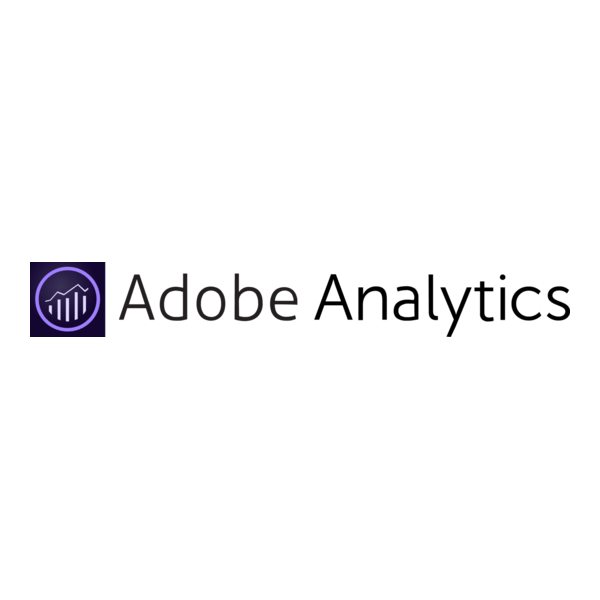
Adobe Analytics Attribution: Complete Buyer's Guide
Enterprise-grade marketing attribution platform
Adobe Analytics Attribution is an enterprise-grade marketing attribution platform that leverages AI-powered algorithmic modeling to solve complex cross-channel attribution challenges for large organizations.
Market Position & Maturity
Market Standing
Adobe Analytics Attribution operates as a mature enterprise solution within the rapidly expanding marketing attribution market, which reached $4.74 billion in 2024 with projected growth at 13.6% CAGR through 2030[49].
Company Maturity
Adobe's market standing reflects significant enterprise adoption, though the platform requires substantial organizational commitment and technical resources that distinguish it from more accessible alternatives[37][52].
Growth Trajectory
Growth trajectory indicators suggest continued enterprise adoption, particularly among organizations requiring GDPR-compliant attribution with server-side tracking capabilities[54].
Industry Recognition
Industry recognition stems from Adobe's broader marketing technology ecosystem leadership, with Attribution IQ representing a critical component of the company's comprehensive marketing analytics platform[39][45].
Strategic Partnerships
Strategic partnerships within Adobe's ecosystem provide integration advantages, while the platform's enterprise focus positions it for continued growth among large organizations requiring sophisticated attribution capabilities beyond basic measurement approaches[39][45][52].
Longevity Assessment
The platform's long-term viability appears strong given Adobe's market position, though organizations should consider implementation complexity and resource requirements when evaluating long-term strategic fit.
Proof of Capabilities
Customer Evidence
Adobe Analytics Attribution demonstrates proven capabilities through documented implementation patterns showing that phased rollouts typically achieve higher success rates than simultaneous enterprise-wide deployments, with successful projects following 4-12 week staged implementations[37].
Quantified Outcomes
Organizations report significant workflow transformations as teams shift from manual reporting to strategic analysis after successful Adobe Attribution implementations.
Case Study Analysis
Technical validation is evidenced by the platform's ability to process multiple touchpoint combinations using advanced mathematical frameworks, with algorithmic models that adapt based on conversion patterns and customer journey data[40].
Market Validation
Market validation is demonstrated through the platform's position within the $4.74 billion marketing attribution market with 13.6% CAGR growth projected through 2030[49].
AI Technology
Adobe Analytics Attribution's technical foundation centers on Attribution IQ, a sophisticated algorithmic engine that processes multiple touchpoint combinations using advanced mathematical frameworks[40]. The platform's Sensei AI integration provides automated anomaly detection and real-time predictive insights, enabling marketers to identify attribution shifts from established baselines before they impact campaign performance[42][43].
Architecture
The platform's container architecture supports session-based attribution with configurable lookback windows ranging from 1-90 days, addressing the limitations marketers face with standard attribution restrictions[40][53].
Primary Competitors
Adobe Analytics Attribution competes primarily in the enterprise segment against established solutions including Rockerbox, HubSpot, Salesforce Einstein, and Nielsen[49].
Competitive Advantages
Adobe's competitive strengths include Attribution IQ's model flexibility that exceeds many competitors by offering both algorithmic and rule-based approaches within a single platform[39][48]. Cross-device identity stitching capabilities provide more comprehensive journey mapping than solutions focused primarily on web-based attribution[38][45]. Sensei AI integration delivers real-time optimization capabilities that static attribution models cannot match[42][43].
Market Positioning
Market positioning emphasizes sophisticated attribution capabilities within a comprehensive marketing technology ecosystem, though this creates higher barriers to entry compared to specialized attribution solutions with simpler deployment models.
Win/Loss Scenarios
Win scenarios favor Adobe for organizations requiring enterprise-scale attribution within Adobe's marketing ecosystem, particularly those with substantial conversion volumes and complex cross-device customer journeys[38][40][52]. Loss scenarios occur when implementation timeline is critical and requires rapid deployment within 30-60 days, as Adobe's comprehensive approach typically requires longer implementation periods[37].
Key Features

Pros & Cons
Use Cases
Pricing
Featured In Articles
How We Researched This Guide
About This Guide: This comprehensive analysis is based on extensive competitive intelligence and real-world implementation data from leading AI vendors. StayModern updates this guide quarterly to reflect market developments and vendor performance changes.
54+ verified sources per analysis including official documentation, customer reviews, analyst reports, and industry publications.
- • Vendor documentation & whitepapers
- • Customer testimonials & case studies
- • Third-party analyst assessments
- • Industry benchmarking reports
Standardized assessment framework across 8 key dimensions for objective comparison.
- • Technology capabilities & architecture
- • Market position & customer evidence
- • Implementation experience & support
- • Pricing value & competitive position
Research is refreshed every 90 days to capture market changes and new vendor capabilities.
- • New product releases & features
- • Market positioning changes
- • Customer feedback integration
- • Competitive landscape shifts
Every claim is source-linked with direct citations to original materials for verification.
- • Clickable citation links
- • Original source attribution
- • Date stamps for currency
- • Quality score validation
Analysis follows systematic research protocols with consistent evaluation frameworks.
- • Standardized assessment criteria
- • Multi-source verification process
- • Consistent evaluation methodology
- • Quality assurance protocols
Buyer-focused analysis with transparent methodology and factual accuracy commitment.
- • Objective comparative analysis
- • Transparent research methodology
- • Factual accuracy commitment
- • Continuous quality improvement
Quality Commitment: If you find any inaccuracies in our analysis on this page, please contact us at research@staymodern.ai. We're committed to maintaining the highest standards of research integrity and will investigate and correct any issues promptly.